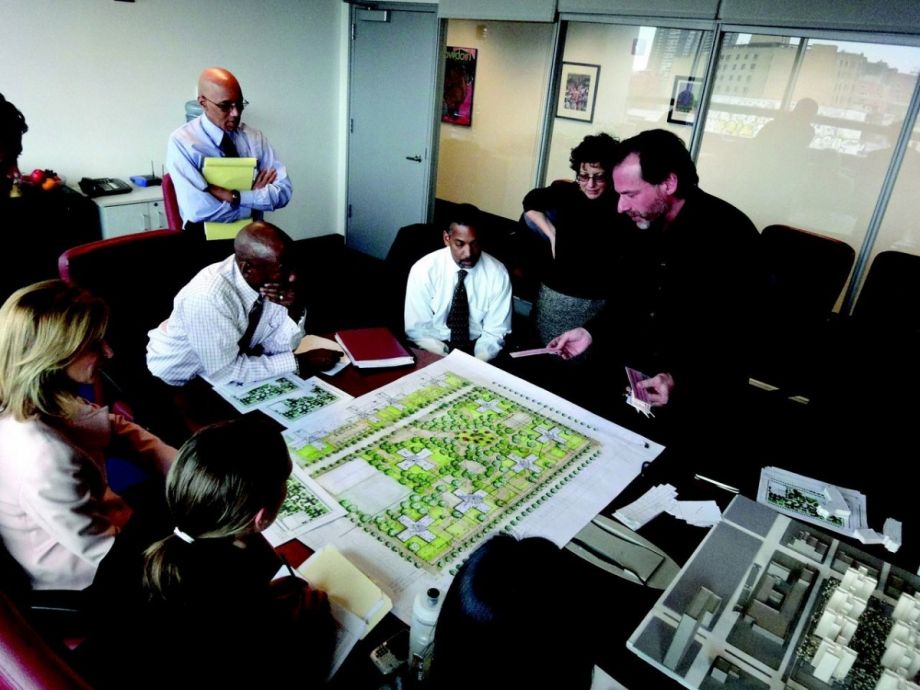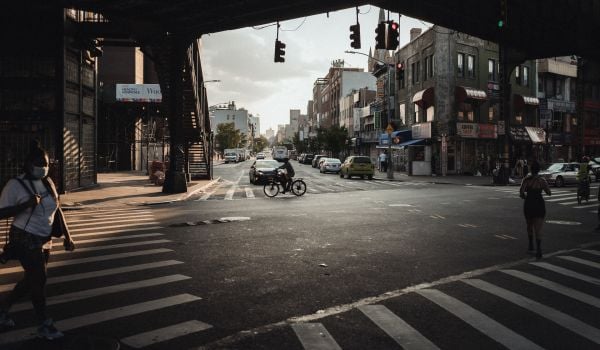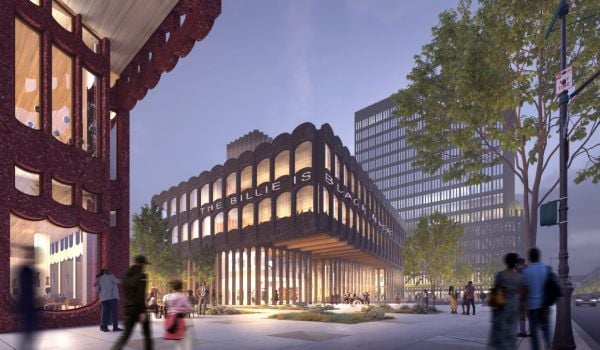It’s morning in Seattle when Alexandros Washburn calls to discuss his new book. The chief urban designer in the New York City Department of City Planning, Washburn is out there on tour to promote The Nature of Urban Design: A New York Perspective on Resilience, published in October by Island Press.
“I’m sitting in the most incredible building,” says Washburn, who began his career as an architect. “It’s a net-zero building. Six stories tall. It’s amazing. Its goal is to produce 100 percent of the energy it produces through the year. And it catches water and filters it from the roof and uses it for potable drinking water. It doesn’t even emit sewage into the local sewage system…”
Resilience is never far from this designer’s mind, nor from his consciousness as a New Yorker. The time Washburn takes admiring the Bullitt Center’s green features is one instance of that. His book is the written proof. Housing unit policies made to stave off the spread of tuberculosis, he reminds the reader, was the result of planning with a purpose. Hurricane Sandy damage costs New York City an estimated $19 billion. Resilience, he writes, is that purpose now.
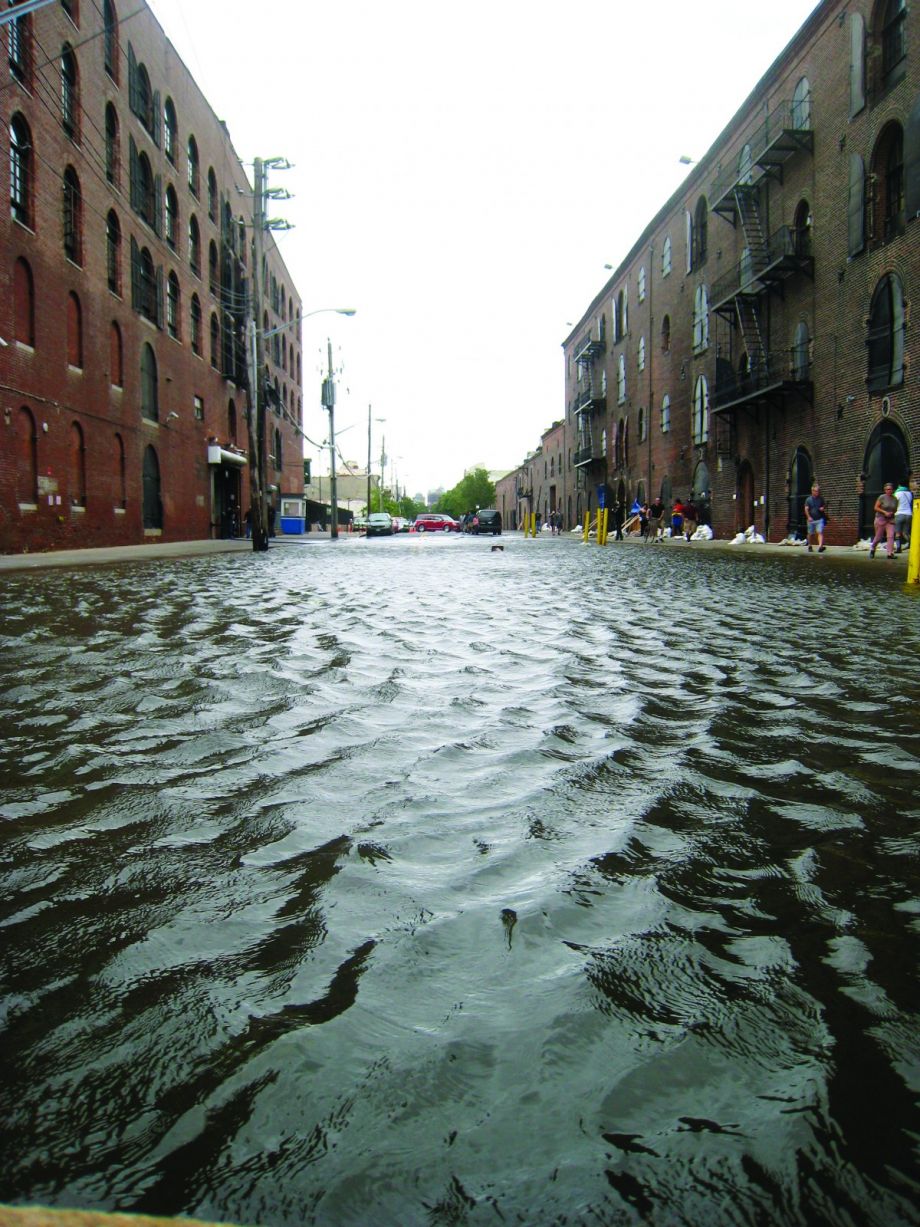
Red Hook, flooded from Hurricane Sandy. Credit: Erick Gregory
When the storm hit, Washburn evacuated his family from their house in Red Hook, Brooklyn. He stayed behind, however, because he wanted to see the storm’s impact for himself. The early pages of The Nature of Urban Design read like a diary of those moments. Washburn recalls the martini he drank before realizing the hurricane would arrive at high tide. He catalogues the moments when he put on his rubber boots and when the lights went out.
On the phone now, he mentions the Bullitt Center’s basement compost digesters and huge rooftop solar panel to point out that the structure reduces its own carbon imprint, something he believes all buildings should aspire to do. “Every building should generate a portion of what it consumes,” he writes, later adding, “My puny resources and those of neighbors are nothing compared to the next storm.”
Washburn writes on best practices from Seoul to Hamburg’s HafenCity (a district we’ll talk more about in an upcoming Forefront story). But before that, he takes time to outline the tenants of urban design and explain the process of how “rules” are made. These sections are something of a textbook, written in a voice that seems aimed at a mentee’s ear. Many of the photos and designs are his own. His take on urban design is a principled one that’s doesn’t place many, if any, boundaries on the profession’s reach.
“Each project changes the balance,” he writes, “like a bird setting down on a wire, and affects the next project; urban design must be taken into consideration at each step.”
You could call the book a reference of sorts, but Washburn doesn’t distill the trade into something one could simply jot in a notebook. He doesn’t give one of those summaries that you settle on when meeting people who ask what you’ve been working on. Cities, for Washburn, are “marvelously adaptable” spaces, and urban designers ought to be able to work “collegially” with thinkers from other fields. Design must happen at different levels, which in New York is complex since it’s what Washburn considers a fractal city.
Fractals, in math, are patterns that repeat themselves endlessly. Similar if not identical patterns manifest and continue on a varying number of scales. There are plenty of websites and videos that nerd out over examples of fractals in nature, like the rungs of a spiral inside a seashell, the veins of tree leaf, or the tributaries and streams that flow from a river source. What Washburn describes, though, is a network of stacked streets like the ones you find in Manhattan.
“Part of a fractal pattern is that you can zoom in with infinite specificity, infinite detail, and I think of the city very much in that way,” he says.“That you know there is a city that you might experience from the air. It has its gridded streets, it has its topography, but you can keep zooming in to a city, into a neighborhood, and from that neighborhood into a block, and from that block, to a house or a store, essentially into someone’s life.”
“I don’t mean to be overly philosophical about this,” he continues, “I just mean that the city has a system of nested scales — everything, for instance, from a flower box to a large city park… A big part of urban design is to be able to operate at a variety of different scales and understand how the rules change for the different scales, even though the values don’t.”
When he zooms all the way in, so to speak, there’s work to do at home. He lives in a three-story building that once was a warren. (You may have seen it in the New York Times.) To flood-proof the first floor, empty since Hurricane Sandy, Washburn is engineering a hydrostatic equalizer and working to “densify the soil underneath the slab in our foundations.”
Raise it up a notch and you have the street level. Washburn would like to see a shop or restaurant move into the ground floor of his house, which remains empty. But if his flood-proofing techniques spread down the block, he’d love it if his neighbors could do the same. He sees a neighborhood with local businesses at the ground level and families living above, dry from future storm surges.
Then there’s his vision for Red Hook. The coastline there allows you, according to Washburn, to feel like “you’re a part of the water,” a quality he doesn’t want to change. He imagines low boulders off the coast.
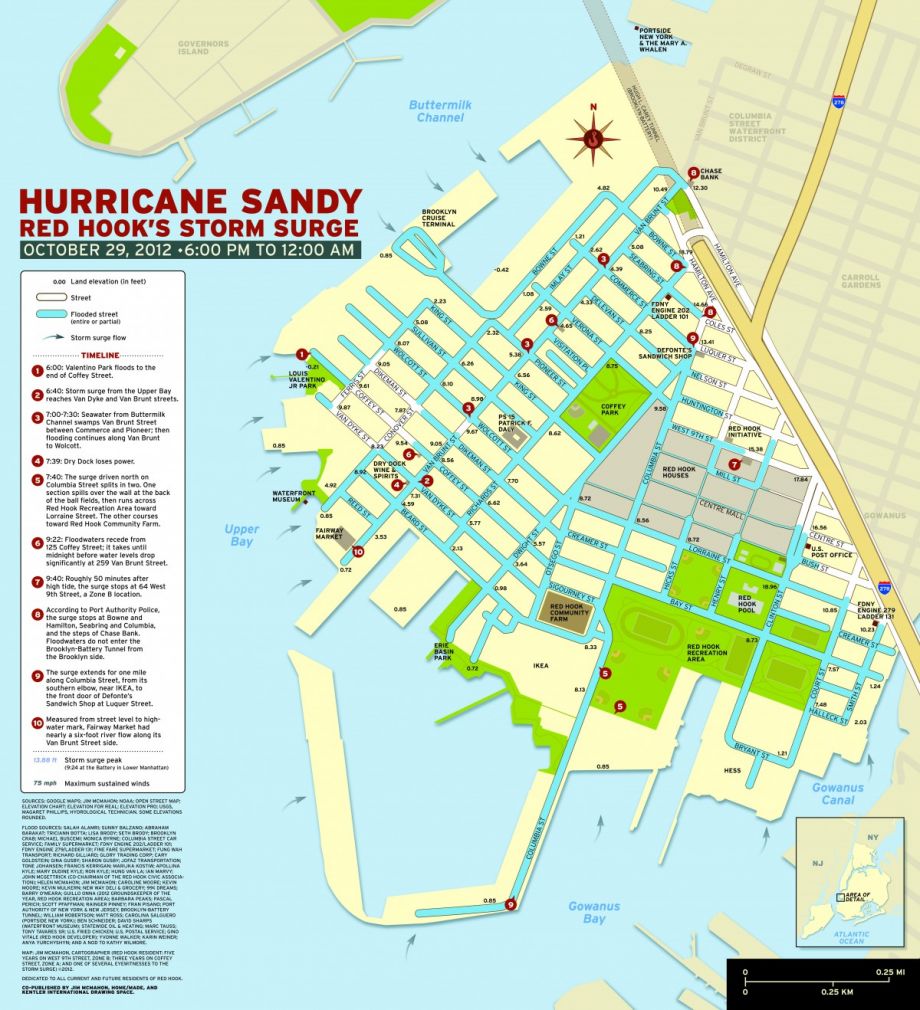
Where and how the flooding happened in Washburn’s neighborhood during Hurricane Sandy. Map from Washburn’s book. Credit: Jim McMahon.
“These raised areas will be landscaped, and will make for a wonderful promenade, but they’ll be far enough out in the water that they won’t block your view as you look down the street,” he says, “So there’ll be water on both sides of them and during the storm event, you could close some relatively small flood gates. It would make an interconnected chain of water parks along the edge of the actual shoreline.”
At the city level, he’s thinking of New York’s coastal defenses. Many Baroque cities have master plans that include perimeter fortifications. New York City does not, and that raises a different set of questions if you look at the city “like a bee-hive.”
“How can you write the rules — the zoning codes, the building codes, the insurance underwriting requirements, all the unseen DNA of how cities move — how do you write that code so that as individual actions take place they somehow weave themselves into a continuous whole?” he says.
There’s another reason Washburn likes the Bullitt Center. He sees it a model for more green architecture at a commercial scale. Green skyscrapers are great, but why not six-story office buildings? Why not houses? Zooming in, the ideal city to Washburn is one where people can get bonds for solar panels for their individual houses. Zooming out, it’s a city with laws that allow such micro-financing to occur.
“You know, urban design is not just about drawing pretty pictures,” he says. “You can design finance, you can design policy, you can design these things that reverberate throughout a city.”

Cassie Owens is a regular contributor to Next City. Her writing has also appeared at CNN.com, Philadelphia City Paper and other publications.
Follow Cassie .(JavaScript must be enabled to view this email address)

